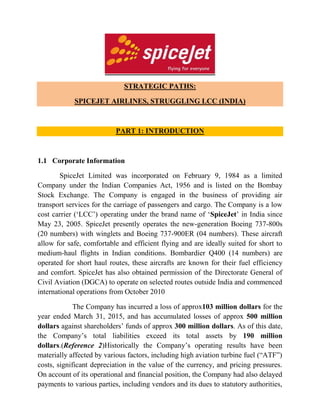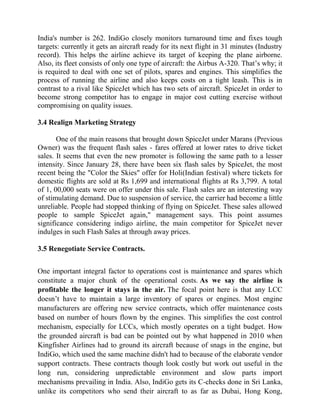SpiceJet Airlines is an Indian low-cost carrier that has struggled financially in recent years, accumulating losses of over $500 million against shareholder funds of $300 million. It faces several strategic issues that threaten its ability to continue as a going concern, including high costs from its mixed fleet of aircraft types, lack of capital, and inefficient operations. Its key strategic challenge is achieving sustainable growth through addressing these underlying financial and operational weaknesses in order to become a strong competitor in the growing Indian market.
















